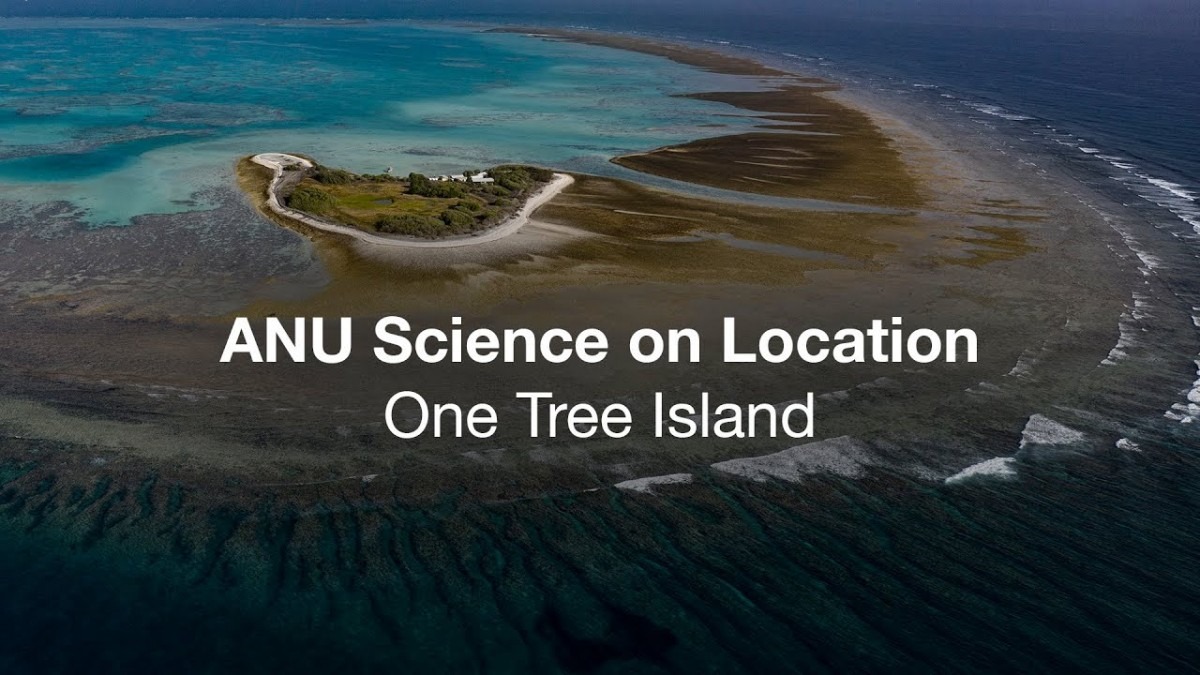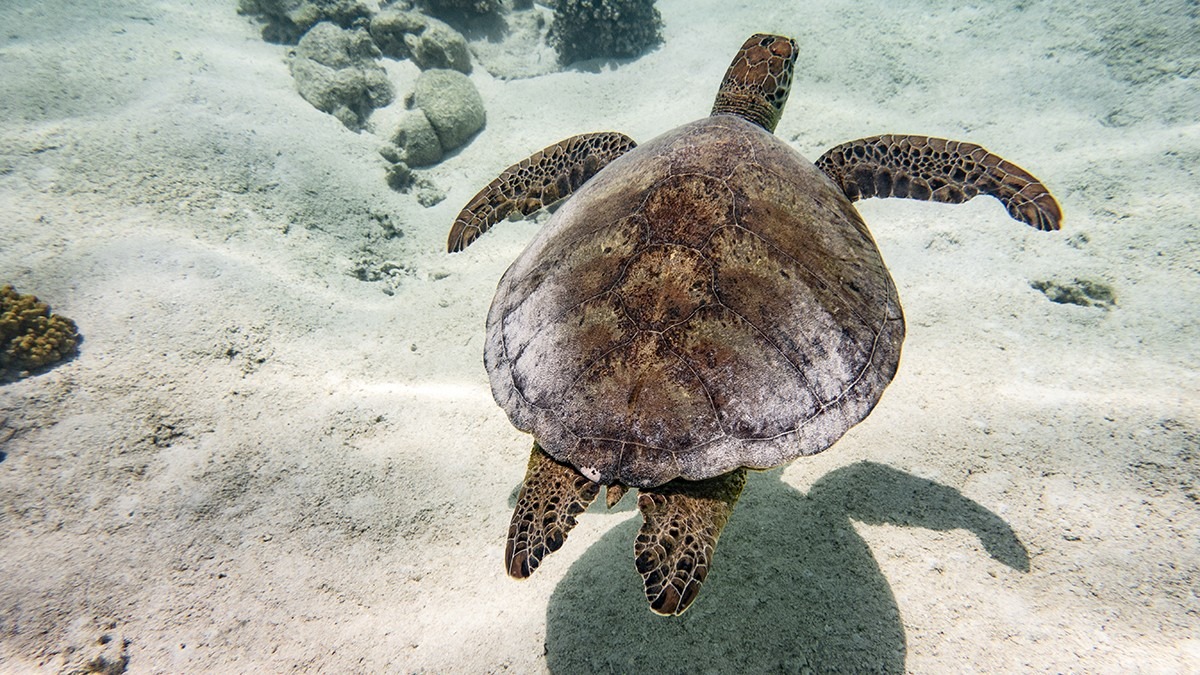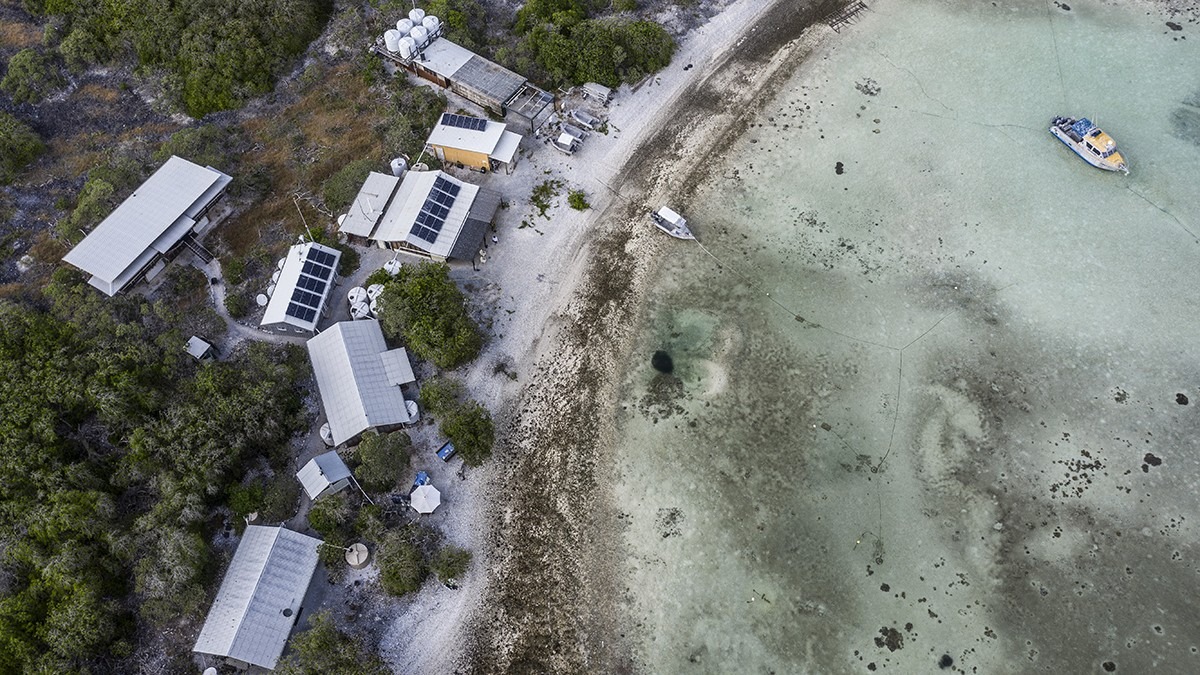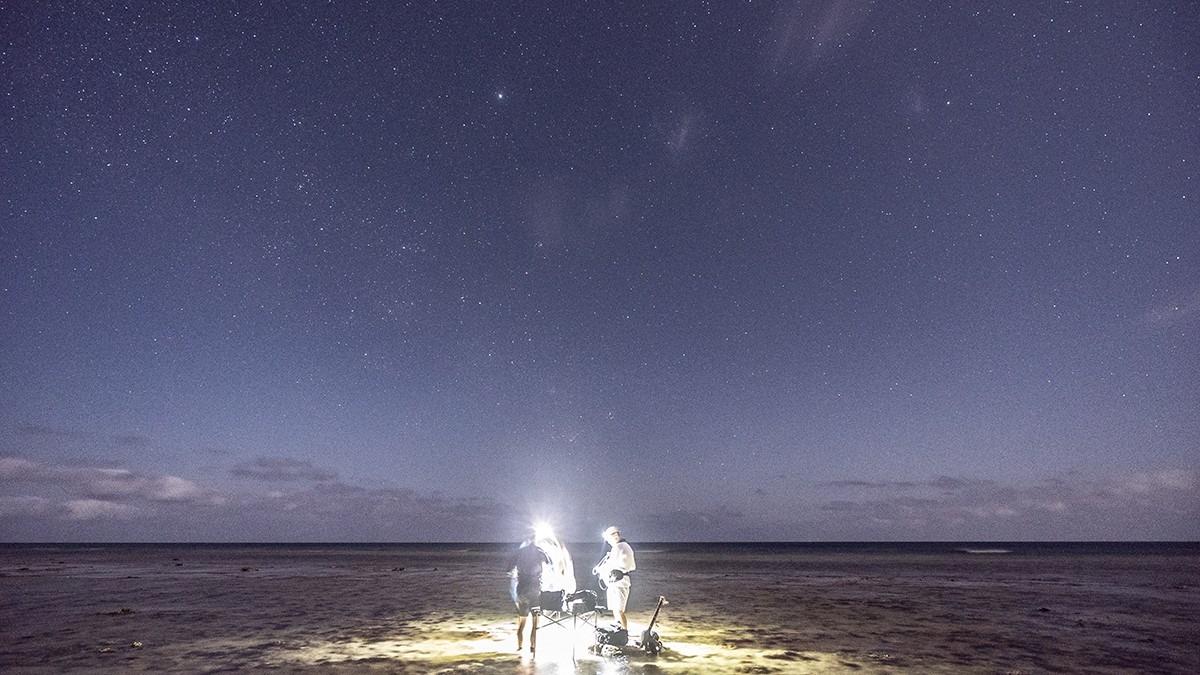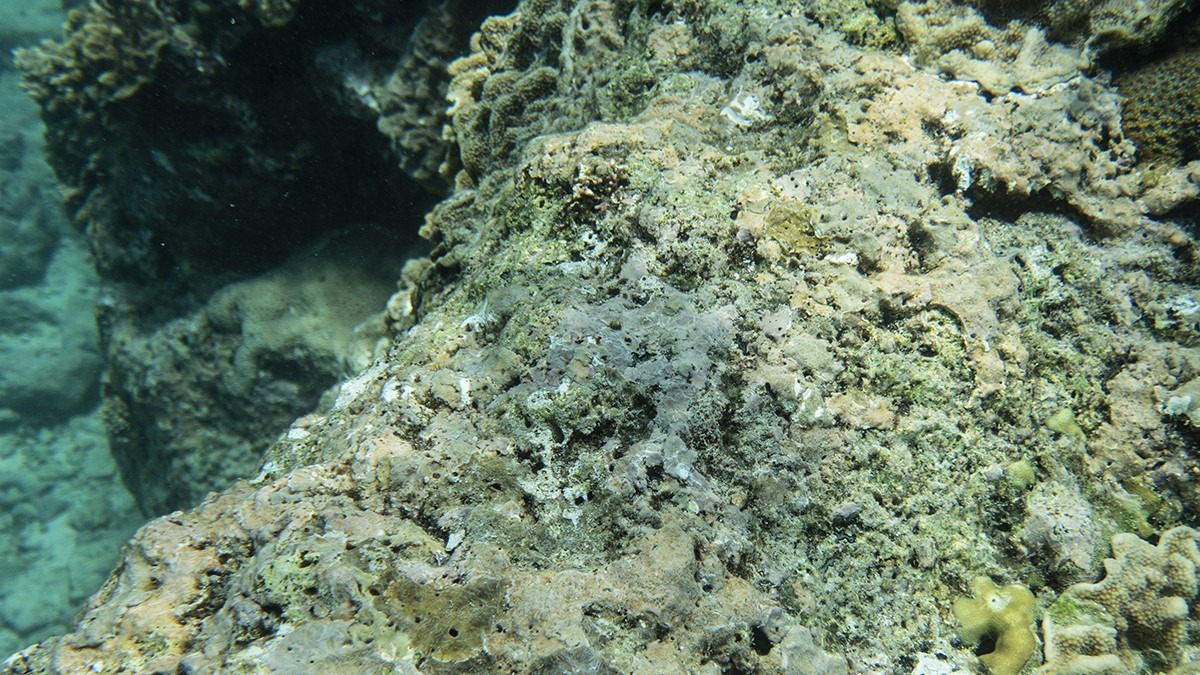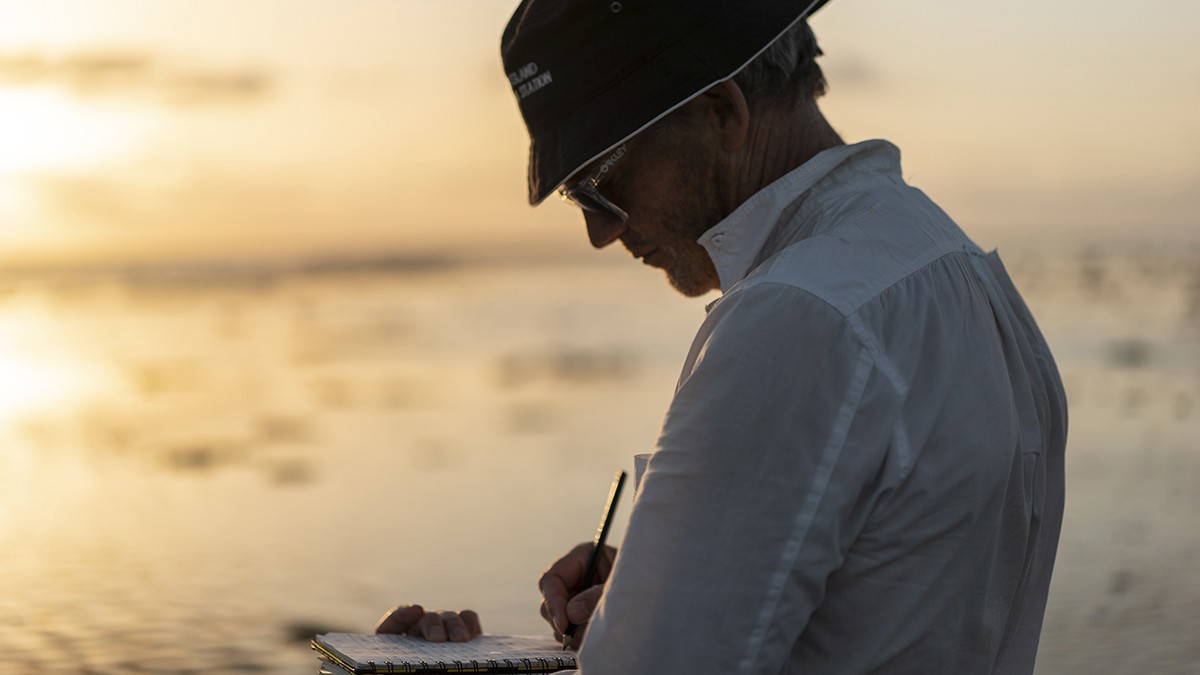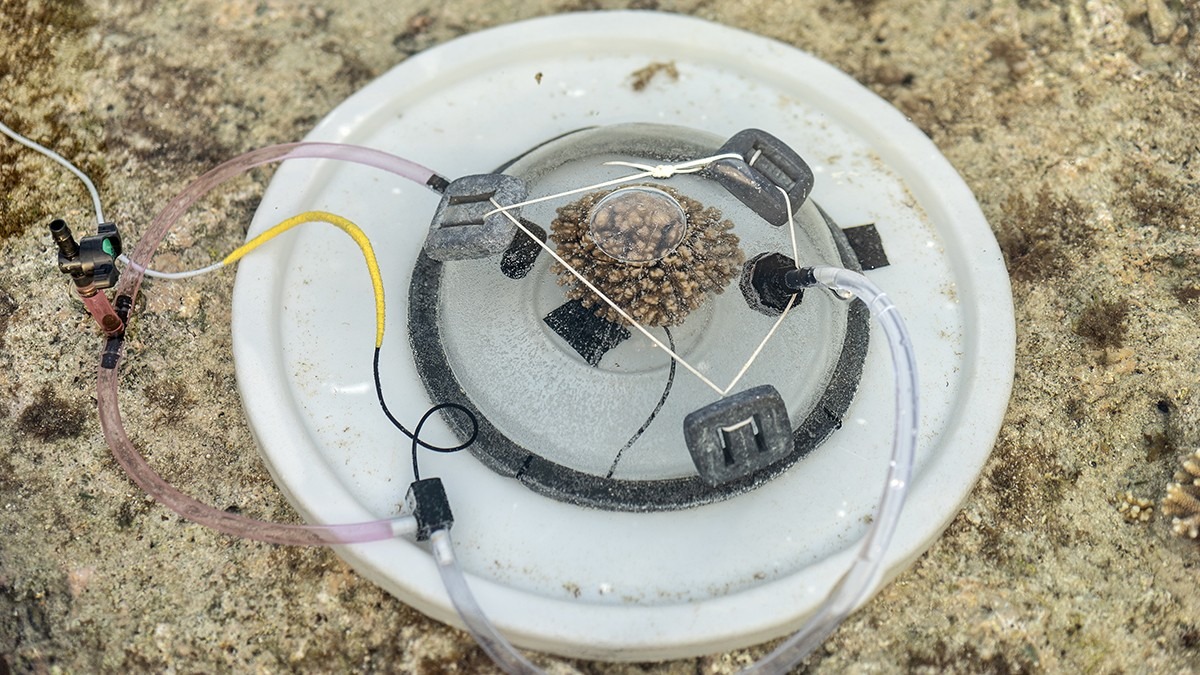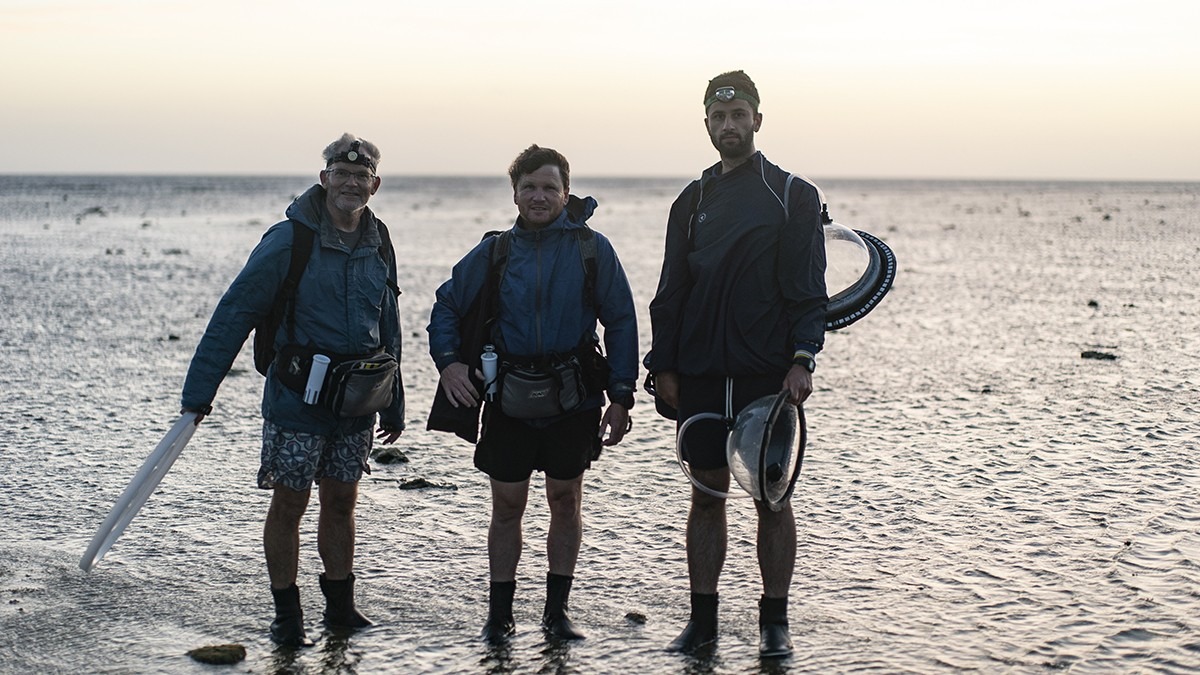
ANU Science on Location: One Tree Island
There is a short window of time when you can access One Tree Island by boat. This window of about thirty minutes occurs at high tide, the only time the boat hull can actually clear the fragile rim of the One Tree Island outer reef. As the boat inches forward, your captain’s face is creased with concentration. Looking out over the side, you can see why: the hull is almost grazing the prehistoric structure. When the boat finally passes into the One Tree Island lagoon, you breathe a sigh of relief.
Stepping off a narrow gangplank, your shoes crunch over the coral beach as you walk towards the One Tree Island Research Station. You hear the distinctive call of the noddy terns in the trees. The island is a sanctuary for these small grey and black birds. Many are rearing new chicks, and squawk protectively when you step too close. The station itself is a cluster of small buildings including a living space, bunk rooms, a chemical lab, a wet lab and a shower block. This tiny coral cay, surrounded by ocean, is where you will spend the next ten days.
If you want to research the Great Barrier Reef, One Tree Island is the perfect place to do it. Located on the southern end of the Reef, it is part of the Capricornia Cays National Park. The island is classified as a Research Zone, protecting it from tourism and fishing.
One Tree Island has also evaded some of the worst recent impacts of climate change. While warm temperatures have caused mass coral bleaching events on northern parts of the Great Barrier Reef, One Tree Island has stayed cool and relatively free of bleaching. It’s some of the best remaining coral reef in the world.
But this reef – like all reefs across the globe – is severely threatened by the changing climate.
It’s well understood that increasing carbon dioxide in our atmosphere is driving up oceanic temperatures. But it is also driving up oceanic acidity, and that’s what interests these researchers.
Dr Kate Holland, a Postdoctoral Fellow at the ANU Research School of Earth Science, explains:
“The increase in acidity of the water will have negative impacts for all the creatures on the reef, specifically those that make the reef structure. This includes the corals, algae, clams, crabs and anything that makes hard skeletons or shells. They will have a hard time making those structures if the seawater acidity continues to increase.”
This is why you’re here: to understand why a group of researchers are four years into a study on the impact of increasing acidity on reef life. Over ten days you accompany a team of earth scientists as they venture onto the reef flat. At this time the water is shallow enough for them to set up their domes and take their measurements. Measurements are taken at every low tide, even if it occurs in the middle of the night.
So here you are. It’s past midnight and you’re standing ankle-deep on the reef flat. The Milky Way reaches out across the night sky above. Beneath you, the Great Barrier Reef is literally breathing.
You’re surprised that you’ve come to the Great Barrier Reef, not for the coral, but the algae. You would be naive to dismiss the crustose coralline algae for its unremarkable appearance. As the midnight reef-flat venturers will tell you, the algae is doing much more for the ecosystem than we had previously thought.
Like the lazy green turtles that lounge on the reef flat, algae breathes. During the day, algae draws in dissolved carbon dioxide from the ocean, using it to grow. This process is important for reducing the acidity of the ocean. More important than this is the role they play in holding the reef together. Crustose corraline algae forms a rock-hard outer layer around dead coral, reinforcing the reef against wave energy and erosion. They function to cement the reef together in the same way that cement holds a house together.
“Do you want to see how the domes work?”
In the moonlight Professor Eggins has connected a small pump to a Perspex dome.
“The domes’ function is to isolate different members of the reef community. We're seeing what kind of processes they're doing every day and every night. We take samples and measure the water temperature, oxygen content and salinity at 30-minute intervals.”
The data from the domes tell a sombre story about the future of the reef. The algae are responding poorly to changes in ocean acidification. The data shows that it is far more vulnerable to ocean acidification than corals are.
The concern is that increasing ocean acidification dissolves the cement that’s holding the reef together. Continuing acidification could see the reef flat crumble and weaken the entire ecosystem.
It’s 2am now and the tide has started to rise. You pack up your dome and start the trudge back to the research station. You tread carefully as you cross the reef flat, making sure not to step on any ‘stonies’ (stonefish) or ‘conies’ (coneshells). In isolation, the individual components of the reef appear to be tough and resilient.
But this is why you have come so far from Canberra. You have to, in order to understand the fragility of the broader reef system; why every organism on the reef plays a critical role and how each organism is responding to the changing climate. Here, you understand that the innocuous pink algae breathing beneath you is helping to sustain the whole reef habitat.
That losing one piece of the house could bring it all crumbling down.

